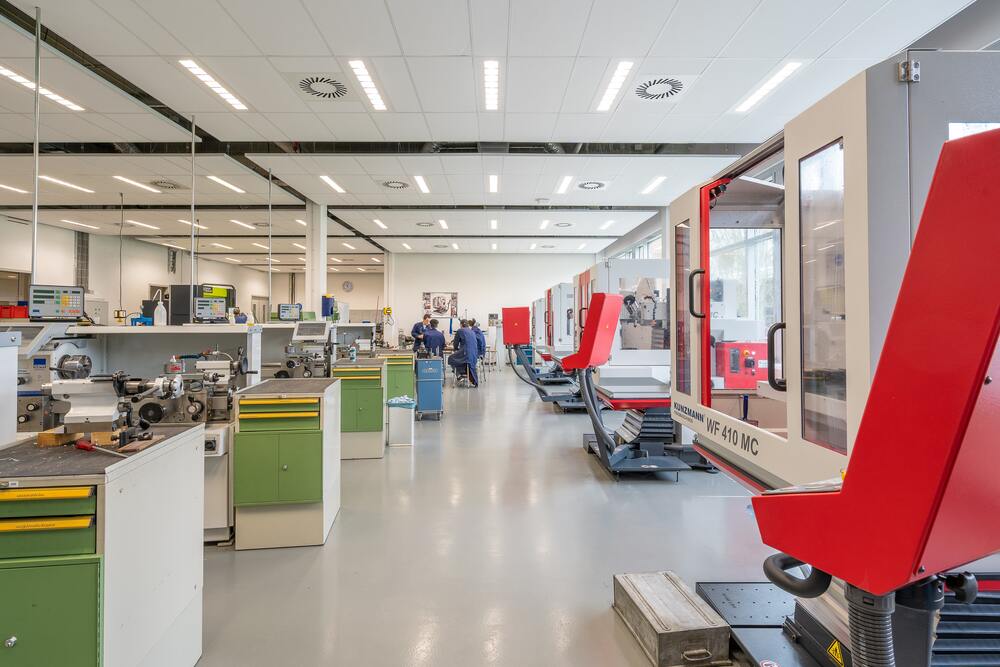Many of us may not know what depreciation is in depth. Basically, depreciation is the decline in the value of an asset or item due to use and other factors.
So that you don't misunderstand this term, let's see the full explanation in the following article!
1. What is Depreciation
Depreciation is a term often used in economics and accounting. In general, depreciation means the decrease in the value or quality of something due to use, age, or other factors. According to the Big Indonesian Dictionary (KBBI), depreciation is a decrease in the value of money or goods due to inflation or other circumstances.
In economics, depreciation is a decrease in the value of a country's currency against another country's currency due to changes in demand and supply in the foreign exchange market. Currency depreciation can affect a country's trade balance, inflation, and economic growth.
Meanwhile, in the realm of accounting, depreciation is the allocation of the cost of acquiring fixed assets (such as machinery, vehicles, buildings, etc.) to operating expenses over the useful life of the asset. Asset depreciation aims to reflect a decrease in asset value due to use, age or damage. Asset depreciation also affects a company's income statement and balance sheet.
2. 5 Characteristics of Depreciation
Quoted from the taxdose.com site, there are five characteristics of depreciation. Are as follows.
1. Depreciation only applies to fixed assets that have a useful life of more than one year.
2. Depreciation must be systematic and rational, meaning it must be based on reasonable and consistent methods and assumptions.
3. Depreciation must reflect the pattern of consumption of the benefits of the asset over its useful life.
4. Depreciation is not affected by fluctuations in asset market prices.
5. Depreciation is not related to cash accumulation set aside for asset replacement.
3. Example of Depreciation
After you understand the notion of depreciation seen from various sides and its characteristics, an example of depreciation is as follows.
1. A car purchased for IDR 200 million in 2018 has a selling price of IDR 150 million in 2019. The depreciation value is IDR 50 million.
2. A production machine purchased for IDR 500 million in 2017 has a useful life of 10 years and a residual value of IDR 50 million. The depreciation fee per year is IDR 45 million.
3. An office building purchased for IDR 2 billion in 2016 has a useful life of 20 years and a residual value of IDR 200 million. The depreciation fee per year is IDR 90 million.
4. Factors Affecting Depreciation
Depreciation is the decrease in the value of goods or money due to various factors. These factors at least include some of the following.
4.1. Acquisition Cost
Acquisition cost is the amount of money spent to buy fixed assets. Acquisition cost is the basis for calculating asset depreciation. The greater the acquisition cost, the greater the depreciation.
4.2. Estimate the Economical Lifetime of the Asset
Economic life is the period of time when fixed assets can still provide economic benefits to their owners. The economic life may differ from the physical age of the asset. Economic life is influenced by various factors, such as intensity of use, maintenance, technology, and so on. So, the shorter the economic life, the greater the depreciation.
4.3. Estimated Residual Value of Asset
Residual value is the residual value or sale value of a fixed asset after it reaches the end of its useful life. The residual value can be market value, liquidation value, or book value.
Residual values are affected by various factors, starting from the condition of the assets, market demand, and others. The smaller the residual value, the greater the depreciation.
5. How to Calculate Depreciation
Quoted from various existing sources, depreciation can be calculated using the depreciation formula or what is commonly referred to as the method.
5.1. Straight Line Method
This method is the depreciation method most often used in calculating depreciation. The trick is to assume that the depreciation of assets remains the same every year during their useful life (not from the use function).
The formula:
Depreciation per year = (Acquisition Cost - Residual Value) / Useful Life of the Asset
Example: A production machine purchased for IDR 500 million in 2017 has a useful life of 10 years and a residual value of IDR 50 million. Its depreciation per year is:
Depreciation per year = (Rp 500 million - Rp 50 million) / 10 years Depreciation per year = Rp 45 million
5.2. Double-Declining Method
This method assumes that the depreciation of fixed assets is greater in the early years and decreases in subsequent years.
The formula:
Depreciation per year = (Acquisition Cost - Accumulated Depreciation) x Depreciation Rate
The depreciation rate is double the depreciation rate of the straight-line method.
Example: A production machine purchased for IDR 500 million in 2017 has a useful life of 10 years and a residual value of IDR 50 million. The depreciation rates are:
Depreciation rate = 2 x (1 / 10 years) Depreciation rate = 20%
Its depreciation per year is:
Year 1: Depreciation = (Rp 500 million - Rp 0) x 20% Depreciation = Rp 100 million Accumulated depreciation = Rp 100 million
Year 2: Depreciation = (Rp 500 million - Rp 100 million) x 20% Depreciation = Rp 80 million Accumulated depreciation = Rp 180 million
Year 3: Depreciation = (Rp 500 million - Rp 180 million) x 20% Depreciation = Rp 64 million Accumulated depreciation = Rp 244 million
Etc.
5.3. Activity Method (Usage or Production Units)
This method assumes that the depreciation of fixed assets depends on the level of activity in the use or production of these assets.
The formula:
Depreciation per unit of activity = (Acquisition Cost - Residual Value) / Number of Activity Units Over the Useful Life
Depreciation per period = Depreciation per unit of activity x Number of Activity Units in the Period
Example: A production machine purchased for IDR 500 million in 2017 has a useful life of 10 years and a residual value of IDR 50 million. The machine is estimated to be able to produce 100,000 units of product over its useful life. Its depreciation per unit of activity is:
Depreciation per unit of activity = (Rp 500 million - Rp 50 million) / 100,000 units Depreciation per unit of activity = Rp 4,500
If in the first year, the machine produces 15,000 units of product, then the depreciation in the first year is:
First-year depreciation = IDR 4,500 x 15,000 units First year depreciation = IDR 67.5 million
If in the second year, the machine produces 12,000 units of product, then the depreciation in the second year is:
Second year depreciation = IDR 4,500 x 12,000 units Second year depreciation = IDR 54 million
Etc.
5.4. Special Depreciation Method
This method is used for certain fixed assets that have special characteristics, such as buildings, land, or patents. Some examples of specific depreciation methods:
-
Declining Balance Method
This method is similar to the decreasing expense method but uses a lower depreciation rate and does not take into account residual values.
The formula:
Depreciation per year = Acquisition Cost x Depreciation Rate
The depreciation rate is a certain percentage of the straight-line method of depreciation rate.
Example: A building purchased for IDR 2 billion in 2016 has a useful life of 20 years. The depreciation rate is 150% of the straight-line method of depreciation rate.
Depreciation rate = 1.5 x (1 / 20 years) Depreciation rate = 7.5%
Its depreciation per year is:
Year 1: Depreciation = IDR 2 billion x 7.5% Depreciation = IDR 150 million
Year 2: Depreciation = IDR 2 billion x 7.5% Depreciation = IDR 150 million
3rd year: Depreciation = IDR 2 billion x 7.5% Depreciation = IDR 150 million
Etc.
-
Land Depletion Method
This method is used for fixed assets in the form of land used for mining, agriculture, or plantation activities.
The formula:
Depreciation per unit of activity = (Acquisition Cost - Residual Value) / Number of Natural Resource Units that can be Mined or Harvested
Depreciation per period = Depreciation per unit of activity x Number of Natural Resource Units Mined or Harvested in the Period
Example: An agricultural land purchased for IDR 1 billion in 2018 has a residual value of IDR 100 million. It is estimated that the land can produce 500,000 kg of rice during its useful life. The depreciation per unit of activity is:
Depreciation per unit of activity = (Rp 1 billion - Rp 100 million) / 500,000 kg Depreciation per unit of activity = Rp 1,800
If in the first year, the land produces 100,000 kg of rice, then the depreciation in the first year is:
Depreciation for the first year = IDR 1,800 x 100,000 kg Depreciation for the first year = IDR 180 million
If in the second year, the land produces 80,000 kg of rice, then the depreciation in the second year is:
Second year depreciation = IDR 1,800 x 80,000 kg Second year depreciation = IDR 144 million
Etc.
-
Patent Amortization Method
This method is used for fixed assets in the form of patents which give the owner exclusive rights to use or sell an invention or creation.
The formula:
Amortization per year = (Acquisition Cost - Residual Value) / Useful Life of the Patent
The useful life of a patent is the period of time when the patent is still valid and provides economic benefits to the owner.
Example: A patent purchased for IDR 300 million in 2019 has a residual value of IDR 0 and a useful life of 10 years. The amortization per year is:
Amortization per year = (Rp 300 million - Rp 0) / 10 years Amortization per year = Rp 30 million
6. Benefits of Calculating Depreciation
By calculating depreciation we can obtain a number of benefits. The benefits of calculating depreciation are as follows.

Image Source: Pexels/Mike Van Schoonderwalt
6.1. Profit Gain Information from Each Asset
By calculating depreciation, we can find out how much the contribution of fixed assets is to the company's income and profits. Thus, we can evaluate the performance and efficiency of fixed assets.
6.2. Knowing the Initial Price of the Asset
By calculating depreciation, we can find out the initial price of fixed assets that have been purchased. Thus, we can determine the appropriate selling price if we want to sell these fixed assets.
6.3. Minimizing Losses from Assets
By calculating depreciation, we can find out the book value of fixed assets at the end of the accounting period. Book value is the value of fixed assets after deducting accumulated depreciation. Thus, we can minimize losses in the event of damage or loss of fixed assets.
6.4. Knowing the Depreciation Cost of Each Period
By calculating depreciation, we can find out the cost of depreciating fixed assets for each accounting period. Depreciation expense is part of the company's operational costs that must be recorded in the income statement. Thus, we can calculate the company's net profit more accurately.
Friend BFI, thus the explanation regarding Depreciation Is: Definition, Factors, How to Calculate, and Benefits. Hopefully, this article can add insight to you.
Meet the needs of business capital and other costs through the multipurpose loan program at BFI Finance!
The process is safe, fast, and has been verified by the Financial Services Authority (OJK).
You can get other information regarding loans through the following link.
BFI Finance is a company that provides multi-purpose loans with guarantees for motorbike bpkb, car bpkb, and house or shophouse certificates
